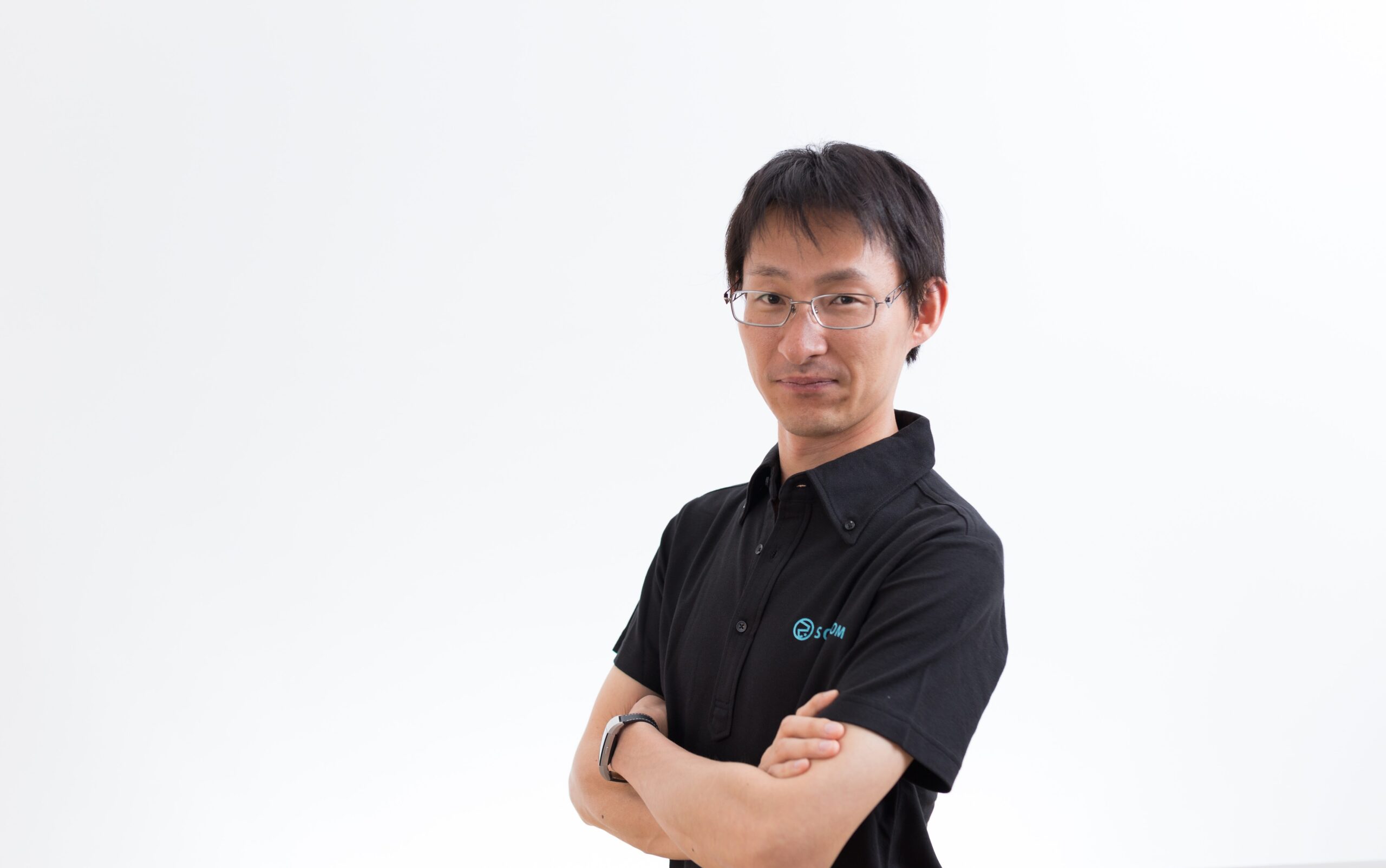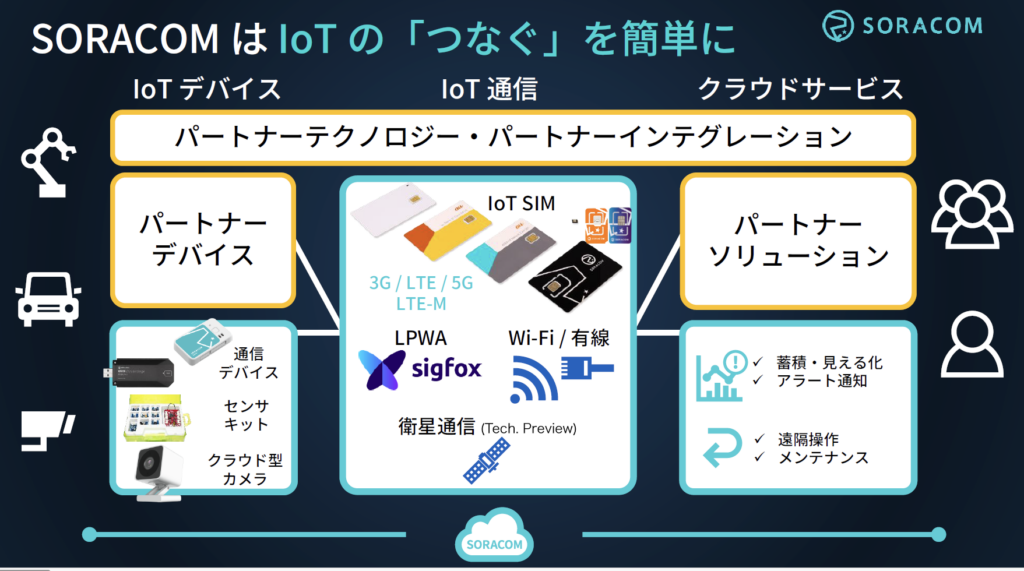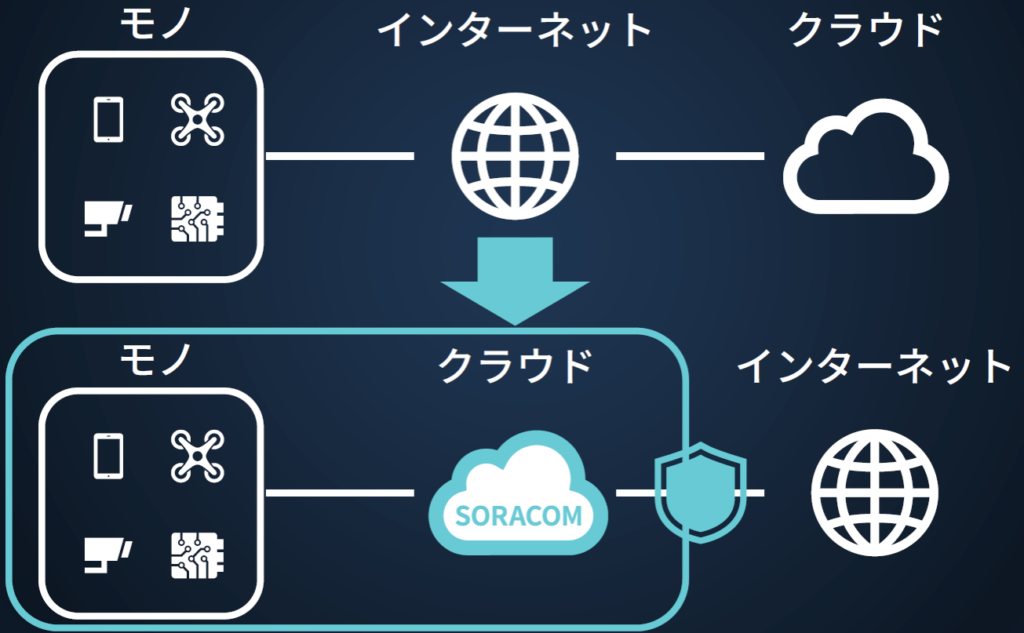Introduction:
``Now that communication technology has become indispensable in daily life, I think IoT will become a trend in the digitalization of workplaces.'' We will provide IoT implementation support to Mr. Matsushita of Soracom Co., Ltd., which provides IoT platforms. We asked him about the challenges of DX that came to light during his time there, as well as future developments such as the spread of IoT technology as infrastructure.
●Person who answered

Soracom Co., Ltd.
technology evangelist
Mr. Kyohei Matsushita
About business areas
Secretariat: Please tell us about Soracom's business area and overview.
松下:There are three elements necessary for IoT. The first is Things, which is the T in IoT, specifically "devices" such as hardware such as sensors and cameras, and the second is "cloud technology" as a mechanism for utilizing data. The eyes are the "network" that connects the field and the cloud. Soracom provides customers with these three elements necessary for IoT. If the customer already has devices, cloud, or communication networks installed in the field, we can provide the necessary services in combination with them. Although it is often used for business purposes, our customers are not limited to corporations.

Secretariat: Please give us an overview of the IoT project that Soracom is working on.
松下: Our mission is to continue to provide services that solve problems that our customers need now or that may arise in the future. Soracom provides technical services such as communications and cloud integration, and customers often create their own IoT systems to solve problems. Their business style may be similar to that of a telecommunications carrier. However, our biggest motivation is not simply to provide communication services, but to provide communication that can be accessed from anywhere.

Secretariat:I hear that you support many IoT projects in a wide range of fields. In particular, could you please tell us about some examples of efforts in disaster prevention in Japan, which has more natural disasters than other countries, and in agriculture, which faces issues such as a declining labor rate?
松下:In the field of disaster prevention, the challenge is how to digitize the site and how to distribute the digital data obtained at the site only to those who really need it. I have heard from people who are actively involved. In the event of a disaster, it is difficult to ascertain information on how far the damage has affected, and if estimates are too localized, evacuation information cannot be distributed to the areas where it is needed.

To solve such issues, we supported the introduction of cellular communication flood detection sensors to Fukuchiyama City, Kyoto Prefecture. (Cooperating partner: Kameoka Electronics Co., Ltd.) It is now possible to provide flood information to citizens, which is useful for evacuation efforts.
Fukuchiyama City has been hit by many floods in recent years, and there have been requests for some time to install equipment to monitor water level changes, but the cost of installation has been a bottleneck. Therefore, the cost problem was solved by creating a detection sensor by combining communication technology using IoT technology and inexpensive devices.

In the agricultural field, we supported Minamiawaji City in Hyogo Prefecture to introduce IoT technology to smart agriculture. (Cooperative partner: Kobe Digital Lab Co., Ltd.)
Agriculture is affected by many factors, such as the moisture content of the soil, which cannot be determined without actually going to the field. By introducing IoT technology, it has become possible to use communications to build a system that allows data collection without the need for humans to actually go to the site.
About IoT introduction support
Secretariat:What are Soracom's strengths in supporting IoT implementation?

松下: Soracom has two major strengths.
The first is the mechanism in which communication services are provided on the premise of being connected to IoT devices. By building the exchange function on the cloud, we are minimizing the threats of the Internet.
The second point is that we offer total services to our customers, including combinations. If you lack the know-how to introduce IoT, we will provide support such as introducing Soracom partners.
Secretariat:What kind of needs and expectations do your clients have as background for introducing IoT?
松下:I think there are two main things that customers expect from us.
The first is to add new services to existing businesses by promoting IoT, and to develop new businesses and make existing businesses smarter.
Second, there is a need to connect sites that have not been connected before. The term "retrofit" is sometimes used, but it is a case of introducing the necessary services to obtain information from a production line that does not have the function to obtain digital data.
Secretariat:Are there any issues or bottlenecks that emerge when introducing an IoT system?
松下:While we provide services, some customers are highly skilled in building the systems necessary for their companies, such as combining services, while others say they don't know where to start when moving forward with IoT. I feel that literacy regarding DX is polarized. Recognizing the shortage of IT human resources as one of the issues, we provide opportunities that will help our customers solve their own issues, such as holding free seminars and introducing partners who can provide industry-specific consultation. It offers.
Secretariat: Are there any challenges or expectations you have in terms of building a technology environment?
松下: There are two major issues.
First of all, communication is meaningless unless it is connected. Since connectivity is the most important requirement, it is necessary to create an environment that allows stable communication.
Next, there is the issue of power supply when acquiring data. Even with a small amount of data, it is required to operate over a long lifespan. To deal with the problem of power supply, there are two methods: installing a battery and using it for a long time with as little power consumption as possible, or using solar panels to produce and consume electricity locally.
There is actually quite a time lag between the time data is acquired and the time it can be used. On the other hand, at sites where IoT has been introduced for equipment management, for example, when utilizing data, results must be reflected in real-time as much as possible. Therefore, we are creating a dedicated network such as M2M (Machine to Machine), which is a concept similar to IoT, to reduce the time lag until data is reflected. Even for services that have been developed in the M2M area, I think we can expect 5G technology to enable data exchange at low cost with as little delay as possible over IoT networks.
The Next Development
Secretariat: Please tell us about the future vision of Soracom's IoT project support.
松下:Our primary desire is to provide as much of a methodology as possible that can be used in any region. We are also working on initiatives using NB-IoT NTN (NarrowBand-IoT Non Terrestrial Network), which is a non-terrestrial communication system that enables network connectivity of large numbers of IoT terminals with low power consumption.
Also, at this point, we are not conscious of providing industry-specific solutions, but we are looking into how digitalization works in each industry, such as manufacturing and retail, and how it works. We believe that it is our responsibility to disseminate information about the benefits that we have.
I am now realizing that communication has become an essential part of modern infrastructure, as by ensuring communication, it is possible to grasp the situation in a remote location in real time.
IT trends change on a roughly 10-year cycle, with the advent of computers increasing productivity, the internet connecting people, and then the emergence of the cloud as a means of data utilization and management. I am thinking. In that sense, I feel that IoT is a trend in the digitalization of the workplace. I think that IoT as an infrastructure for digitalization will become such a common technology that the name IoT itself will no longer be used.
Secretariat:thank you very much.


